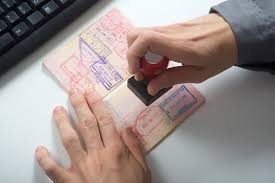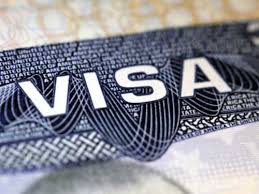A multiple entry visa is a specific type of travel authorization that allows visitors to enter a country numerous times during the visa’s validity period. This visa type is particularly beneficial for frequent travelers, eliminating the need for repeated visa applications and providing increased flexibility for travel plans.
Multiple entry visas hold great importance for people often visiting family abroad, business travelers, or tourists keen on exploring a country in separate trips. They offer various benefits, including cost and time efficiency, ease of travel, and the freedom to enter and leave a country multiple times. This ultimately aids in fostering stronger personal, business, and cultural connections globally. When you apply for a multiple entry Schengen visa, you gain the freedom to travel across 26 European countries without the need for separate visas for each country.
Understanding Single Entry Visas
 A single entry visa is a unique category of travel authorization, primarily meant for one-time use. It grants the holder permission to enter a specific country once, after which the visa is considered exhausted, regardless of the duration of the stay. A multiple visa is a significant advantage for frequent travelers, eliminating the need for a new visa for each visit within the visa’s validity period. A lot of people wonder about multiple entry visit visa, visit visa multiple entry, EU multiple entry visa and ESTA visa multiple entry. Let’s cover these topics.
A single entry visa is a unique category of travel authorization, primarily meant for one-time use. It grants the holder permission to enter a specific country once, after which the visa is considered exhausted, regardless of the duration of the stay. A multiple visa is a significant advantage for frequent travelers, eliminating the need for a new visa for each visit within the visa’s validity period. A lot of people wonder about multiple entry visit visa, visit visa multiple entry, EU multiple entry visa and ESTA visa multiple entry. Let’s cover these topics.
Explanation of Single Entry Visas and Their Limitations
A single entry visa, as the name suggests, only allows for a single entry into the country that issued it. After you leave, regardless of how long you’ve stayed, the visa expires. This limitation can be restrictive for travelers who need to exit and re-enter the country for any reason, like visiting neighboring nations or going back home briefly. It’s also important to note that overstaying a single entry visa can lead to serious consequences, including fines, deportation, and difficulty obtaining future visas.
Overview of Popular Single Entry Visas, Such as Tourist Visas and Work Visas
Popular types of single entry visas include tourist visas and work visas. Tourist visas are issued to individuals visiting a country for a vacation or for sightseeing, and are typically valid for a few weeks to a few months. On the other hand, work visas are provided to foreign nationals who have secured employment in the host country. The duration of these visas often depends on the length of the employment contract. Each of these visas serves a specific purpose and has its own set of requirements.
Key Features, Restrictions, and Validity Periods of Single Entry Visas
A key feature of a single entry visa is its one-time use restriction. Once you exit the country, you can’t use the same visa to re-enter. The validity period of these visas can range from a few weeks to several years, depending on the type of visa and the policies of the issuing country. It’s also crucial to remember that the validity period refers to the time within which you must enter the country, not the duration of your stay. Each country has its own laws governing the issuance and rules of single entry visas, which travelers should acquaint themselves with before their journey.
Exploring Multiple Entry Visas
Delving into the realm of multiple entry visas, we find an ideal solution for frequent travelers, providing them with the flexibility to enter and exit a country numerous times without the hassle of reapplying for a visa after each visit. The convenience of a multiple entry visa is that it allows the holder to travel back and forth from the issuing country multiple times until the visa expires.
Introduction to Multiple Entry Visas and Their Flexibility
 A multiple entry visa is a special kind of visa that allows the holder to enter and exit the issuing country multiple times within a specified duration. This form of visa is popular among frequent travelers due to its flexibility. Instead of reapplying for a visa each time you wish to visit a country, you can use the same multiple entry visa for multiple trips, provided it is still valid. This can be particularly useful for business travelers, frequent tourists, or individuals with family in different countries. A multiple Schengen visa enables you to visit the Schengen Area countries several times within the visa’s validity period, thereby broadening your travel possibilities within Europe.
A multiple entry visa is a special kind of visa that allows the holder to enter and exit the issuing country multiple times within a specified duration. This form of visa is popular among frequent travelers due to its flexibility. Instead of reapplying for a visa each time you wish to visit a country, you can use the same multiple entry visa for multiple trips, provided it is still valid. This can be particularly useful for business travelers, frequent tourists, or individuals with family in different countries. A multiple Schengen visa enables you to visit the Schengen Area countries several times within the visa’s validity period, thereby broadening your travel possibilities within Europe.
Highlighting Famous Multiple Entry Visa Options, Such as the Schengen Visa
One of the most renowned multiple entry visas is the Schengen Visa. It allows the holder to travel freely within the 26 Schengen Area countries in Europe, effectively eliminating the need for multiple visas for each country. Other popular multiple entry visas include the US B1/B2 Visa and the UK Standard Visitor Visa, which allow for multiple visits for business, tourism, or medical treatment within their validity period. Multiple entry business visa and multiple visit visa are also very popular.
Discussing the Benefits, Eligibility Criteria, and Application Process for Multiple Entry Visas
The benefits of multiple entry visas include flexibility in travel, time and cost savings, and convenience for frequent travelers. To be eligible, applicants usually need to demonstrate their need to travel frequently, their ability to financially support themselves during their stay, and their intention to leave the country after each visit.
The application process typically involves submitting a completed application form, providing supporting documents such as proof of income and travel history, and attending an interview, if required. It’s important to note that the issuance of a multiple entry visa is at the discretion of the issuing authority, and the process may vary by country.
Types of Multiple Entry Visas
In the broad landscape of travel documents, multiple entry visas hold a special place, especially for frequent travelers. They come in various types, depending on the issuing country and the purpose of the visit. Among these, the Schengen Visa stands out due to its broad access to multiple European countries. A double entry visa is a type of visa that allows the holder to enter the issuing country twice within the visa’s validity period, offering more flexibility compared to a single entry visa.
Overview of the Schengen Visa and its Multiple Entry Options
 The Schengen Visa is a document issued by Schengen Area countries, allowing its holder to travel freely within this region. It comes in three variations: single, double, and multiple entry. The multiple entry Schengen Visa grants the holder the privilege to enter and exit the Schengen Area as they please within the visa’s validity period. With a double entry Schengen visa, travelers can leave and re-enter the Schengen Area once, which can be beneficial for those planning to visit non-Schengen countries in between their Europe travel.
The Schengen Visa is a document issued by Schengen Area countries, allowing its holder to travel freely within this region. It comes in three variations: single, double, and multiple entry. The multiple entry Schengen Visa grants the holder the privilege to enter and exit the Schengen Area as they please within the visa’s validity period. With a double entry Schengen visa, travelers can leave and re-enter the Schengen Area once, which can be beneficial for those planning to visit non-Schengen countries in between their Europe travel.
Another really important travel requirement is ETIAS rules. The latest updates, travel requirements, and facts about the ETIAS visa waiver. Everything you need to know about European Travel Information and Authorization System is on this website.
Detailed Explanation of the Schengen Area, Visa Validity, and Travel Restrictions
The Schengen Area comprises 26 European countries that have abolished passport control at their mutual borders. With a multiple entry Schengen Visa, you can leave and re-enter the Schengen Area without applying for a new visa each time. The validity of the visa can range from six months to five years, depending on the issuing consulate’s discretion. However, a crucial restriction to note is the “90/180 rule,” which allows holders to stay in the Schengen Area for up to 90 days within any 180-day period.
Requirements, Application Process, and Tips for Obtaining a Schengen Multiple Entry Visa
To apply for a multiple entry Schengen Visa, you must demonstrate a need for frequent travel to the Schengen Area. This could be due to business, studies, or family ties. You must also submit documents like a valid passport, travel insurance, proof of accommodation, round trip flight itinerary, and proof of financial subsistence.
The application process includes filling out the application form, scheduling an appointment, and attending a visa interview. For higher chances of approval, demonstrate your intent to leave the Schengen Area after each visit and your strong ties to your home country. Also, having a positive visa history can increase your chances of obtaining a multiple entry Schengen Visa.
US Multiple Entry Visa (e.g., B1/B2 Visa)
The United States offers several types of multiple entry visas, facilitating a broad range of travel purposes. Among these, the B1 and B2 visas are some of the most commonly issued, catering to business travelers and tourists respectively. A lot of people wonder about multi travel visa, multiple re entry visa and 5 year multiple entry visa.
As mentioned above, ETIAS is going to be important after next year. Learn how to fill out an ETIAS application and your eligibility requirements. This website contains the information you need to be able to travel to Europe.
Explanation of the Visa Types, Such as B1 (Business) and B2 (Tourism) Visas
The B1 visa is intended for business-related travel, including activities like attending conferences, consulting with business associates, or negotiating contracts. The B2 visa is for individuals traveling for leisure, medical treatment, or visiting friends and family. Both these visas allow multiple entries into the US over a specified period, typically ranging from one to ten years.
Discussing the Application Process, Documentation, and Duration of Stay
The application process for a B1/B2 visa involves completing the DS-160 form online, paying the visa fee, and scheduling an interview at the US embassy or consulate. Required documents include a valid passport, a photo, and documents proving the purpose of your trip, financial capability, and intent to return to your home country. Upon entering the US, the Customs and Border Protection officer determines the duration of your stay, typically up to six months. Another question that gets asked is multiple visa application and multiple tourist visa.
UK Multiple Entry Visa (e.g., Standard Visitor Visa)
The UK Standard Visitor Visa is a popular type of multiple entry visa issued by the United Kingdom. It allows the holder to undertake a variety of activities such as tourism, business meetings, academic conferences, or medical treatment.
Explaining the Standard Visitor Visa and its Multiple Entry Provisions
 The UK Standard Visitor Visa is a versatile travel document. It permits the holder to stay in the UK for up to six months, with the flexibility to enter and exit multiple times within the validity of the visa, which can be up to ten years. However, each visit must not exceed the six-month limit.
The UK Standard Visitor Visa is a versatile travel document. It permits the holder to stay in the UK for up to six months, with the flexibility to enter and exit multiple times within the validity of the visa, which can be up to ten years. However, each visit must not exceed the six-month limit.
Addressing Eligibility Requirements, Application Process, and Stay Duration
To be eligible, you must demonstrate the purpose of your visit, ability to support yourself during your stay, and intent to leave the UK after your visit. The application process involves completing an online application, paying the visa fee, providing biometric information, and submitting supporting documents. You may also need to attend an interview. While the visa can be valid for up to ten years, remember that each visit should not exceed six months.
Best Practices and Tips for Multiple Entry Visa Holders
Multiple entry visas offer fantastic flexibility for frequent travelers. However, maximizing their benefits requires mindful management, adherence to regulations, and careful planning. Here are some best practices and tips to help you make the most of your multiple entry visa.
Tips for Planning Trips, Complying with Visa Regulations, and Maintaining Visa Validity
Firstly, careful trip planning is vital to avoid overstaying your permitted duration. Keep track of your entry and exit dates to comply with visa regulations, such as the “90/180 rule” for Schengen visas. Regularly check the expiration date of your visa to ensure it’s valid for your next trip.
Respecting visa regulations is crucial to maintaining good standing and potential visa renewals. Make sure you’re aware of all the rules tied to your specific visa, including the activities permitted under that visa type.
Lastly, remember to always carry your valid passport and visa during your travels. Some countries may ask to see them upon your arrival or departure.
Advice on Maintaining Travel Records, Insurance, and Necessary Documentation
Keeping comprehensive records of your travel history can prove extremely beneficial, especially when applying for future visas. It provides a reference for past entries and exits, travel dates, and can be used to demonstrate adherence to past visa conditions.
Travel insurance is another essential aspect. Ensure you have an active insurance policy covering health and travel risks in your destination country.
Finally, keep copies of all necessary documents related to your visa, such as proof of financial sustenance, employment, accommodation, and your return ticket. These might be necessary if immigration authorities request for them. Always remember, adherence to the stipulations of your visa will ensure hassle-free travel and a more enjoyable experience.
